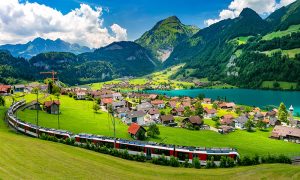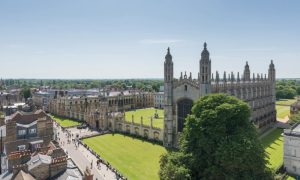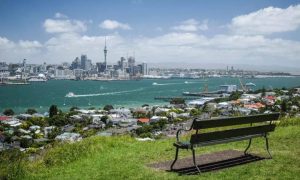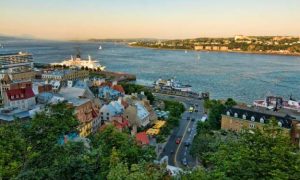As a country with one of the highest per capita happiness indices in the world, Norway has certainly attracted a lot ofOverseas Immigration. Norway's high quality of life, social welfare system and natural beauty make it a desirable destination for many people.immigrantsDestination. However, the biggest concern for would-be immigrants is often:Immigration to NorwayWhat will life be like after that? This article will reveal the Norwegian education, healthcare and welfare system and help you to understandImmigration to NorwayAfter the real life.
I. The Norwegian education system
1. Basic education: free and of high quality
Basic education in Norway, including primary and secondary school, is fully funded by the Government and is free of charge for all residents, and children from immigrant families also enjoy equal access to this benefit. The Norwegian education system emphasizes the development of independence and creativity, and combines classroom instruction with outdoor activities, emphasizing the development of the whole child.
- Primary and secondary schools
Compulsory education in Norway starts at the age of 6 and lasts until the age of 16. There are no school fees, and textbooks and learning materials are mostly provided by the schools. Although Norwegian is the language of instruction, many schools also offer Norwegian as a second language (NL2) courses to help children from non-native-speaking families adapt. - extracurricular activity
Norwegian schools place great emphasis on extracurricular activities such as sports, music, drama and nature exploration. Children not only learn in the classroom, but also accumulate knowledge in the natural environment and develop a sound physique and diverse interests.
2. Higher education: free education and quality teaching
Norwegian universities and colleges offer free higher education to all residents, including immigrants. This means that, whether you are a Norwegian national or an immigrant, you can enter an institution of higher education without paying tuition fees, provided that you meet the entry requirements. The only costs are for textbooks and certain special courses.
- Entrance Requirements
Norwegian universities usually require an upper secondary school certificate and language skills in Norwegian or English. Many universities offer courses taught in English, especially at the master's level, which attracts a large number of international students. - Scholarships and Grants
Although higher education is free of charge, some international students can still apply for scholarships or grants. Norwegian universities focus on providing financial support to outstanding students, especially those from low-income families or with exceptional academic achievements.
II. The Norwegian health care system
1. Universal health insurance: quality public health services
Norway has a universal health insurance system in which all residents have access to high-quality, free public health care. Health care is financed by the Government, and immigrants are enrolled in the universal health insurance system upon obtaining a residence permit, which entitles them to health care services, including basic treatment, hospitalization and outpatient services.
- Registration Fee and Optional Items
Although the Norwegian health care system is financed by the government, some small costs have to be paid by the patient. For example, the registration fee for an initial visit to the doctor is approximately NOK 150-250 (USD 14-24), and certain specific treatments and medications also have to be paid for out of pocket, but usually at a lower cost. - Hospitals and clinics
Norway has high quality hospital facilities and medical services, and is a world leader, especially in emergency and specialized care. For non-emergency medical care, it may be necessary to make an appointment and wait for some time.
2. Medicines and health insurance
Although basic health care is provided by the Government, most medicines in Norway are paid for out of pocket. The Government subsidizes some common medicines to reduce the burden on patients. In addition, immigrants have the option of purchasing additional private health insurance after entering the country in order to access a wider range of treatments and services, especially for non-emergency services in areas such as dentistry and ophthalmology.
III. The Norwegian social welfare system
1. Social welfare: safeguarding the quality of life of the population
The Norwegian social welfare system is extensive and designed to safeguard the basic needs of all residents. Whether they are nationals or immigrants, those who qualify are guaranteed a comprehensive range of benefits. The following are a few of the main welfare programs:

- unemployment relief
If you become unemployed in Norway, eligible residents can apply for unemployment benefits. During the period of unemployment, you will receive a percentage of your salary as compensation to help you through temporary financial difficulties. - Parenting Benefits
Norwegian parental benefits are very generous. Each family is entitled to up to 12 months of parental leave after the birth of a child, and the parents will receive around 80% of their salary for the duration of the parental leave. In addition, the Norwegian government provides free childcare to ensure that families can return to work without any problems. - pension system
The Norwegian pension system is robust, and all working residents are required to make pension contributions. Upon retirement, residents are guaranteed a basic pension. For low-income groups, the Government provides supplementary pensions to ensure that older people can maintain a decent standard of living.
2. Housing subsidies and social assistance
In order to help low-income families, Norway also provides housing subsidies and other forms of social assistance. Housing subsidies can help low-income families to afford the high cost of renting a home, especially if the cost of living in large cities is high.
Four,Immigration to Norwaybenefits: how do I get them?
As an immigrant, you need to fulfill certain conditions in order to benefit from the Norwegian welfare system. These conditions include:

- Long-term residence
As a rule, immigrants need to have resided legally in Norway for more than three years in order to be eligible for full welfare benefits, including unemployment benefits, pensions, parental leave, etc. - Work and tax records
Norway requires immigrants to maintain steady employment and pay social security taxes. Only if you meet these requirements can you receive the relevant social benefits. - Language skills and integration courses
Norway has requirements for the integration of immigrants. A language proficiency test and an integration course lead to better adaptation and greater access to welfare benefits.
V. Summary:Life as an immigrant in Norwaypractical experience
Norway offers immigrants a high-quality living environment with excellent benefits. A free education and healthcare system, generous social benefits, and a demand for highly skilled people make Norway an ideal immigration destination for many. Despite the relatively high cost of living, Norway's social security system and high quality of living conditions provide a wealth of support for immigrants.
If you plan toImmigration to NorwayUnderstanding and adapting to the local education, healthcare and welfare systems will undoubtedly make your life as an immigrant smoother and more fulfilling. Whether it's providing a quality education for your children, or enjoying free healthcare and strong social benefits, Norway is certainly a reassuring and satisfying country to live in.






